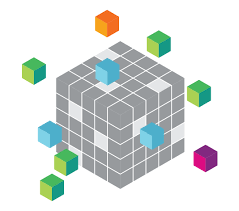Software defined storage: A trend for virtualizing data storage?
By Aditya Abeysinghe

 Software defined storage (SDS) is a storage model that separates software used in storage media from the hardware. SDS uses software that controls the hardware and network resources used in data storages. This allows storage to be added or removed without depending on the hardware. The main benefit of this model is flexible storage and maintenance of storage in devices using software.
Software defined storage (SDS) is a storage model that separates software used in storage media from the hardware. SDS uses software that controls the hardware and network resources used in data storages. This allows storage to be added or removed without depending on the hardware. The main benefit of this model is flexible storage and maintenance of storage in devices using software.
The methodology used
Different types of SDSs exist and the methodology used depends usually on the type. A type of SDS is storage virtualization. In this type, a hardware-based storage is used and software is used to virtualize this storage such that it can be used by different processes and monitored centrally. Using virtualization, SDS creates virtual disks which are shown as different storage units within the same hardware storage. This method will also use management of storage policies for backups and snapshots.
Using block or file or object storage are other types of SDS. In these types, a distributed server cluster is used to provide storage using either block or file or object storages. The method used can be changed by the business user using the central system which controls storage management in SDS. Scale-out block, scale-out file and scale-out object are other types of SDSs to use scale-out storages with SDS.
APIs (Application Programming Interfaces) are used by SDSs to maintain storage devices. These APIs can communicate with the device’s storage and allocate virtual storages as requested. As described above, a disk storage such as block, or object is also used to support applications to use APIs. Scalability and backup are used in SDSs to provide flexibility and recovery in storages.
Benefits
SDS is storage without depending on the hardware. Therefore, users can use any server to build an SDS storage. Other storage systems depend on the hardware, and they cannot be often used with hardware that do not provide support for storage other than storages specified. With SDS, the storage capacity can be extended as needed without increasing hardware storage. Because capacity can be scaled out without scaling up hardware storage SDSs are cost effective.
Different data sources could be added such as network drives, external disk systems, cloud storage etc. by using SDS. They can be combined to build storage of different types and use already existing hardware to increase the storage. Also, automation of data storage is easy as it does not rely on the hardware or the type of storage. Therefore, SDS can be used to manage storage without regular monitoring if data storages are already configured.
What is SDS?
SDS is often used as a term interchangeably with storage virtualization. Storage virtualization allows different devices within one hardware to be used as if they are on different hardware. SDS however separates hardware of a device from the software used to manage storage. SDS acts as a layer of storage control between hardware and software and facilitates network and physical storage devices. SDS can run on both virtual machines and bare metal servers and even in the cloud.
Image Courtesy: https://www.suse.com/







